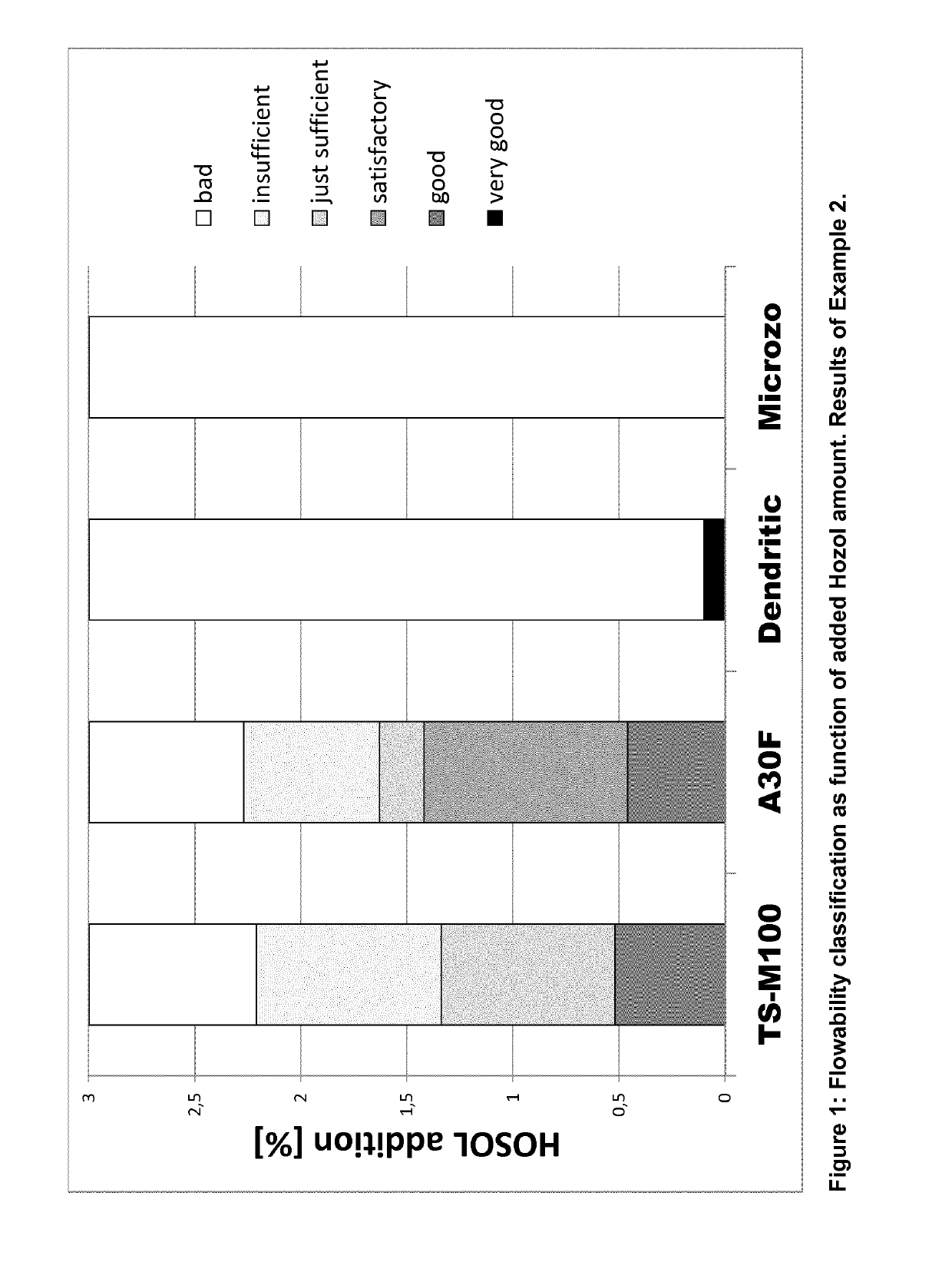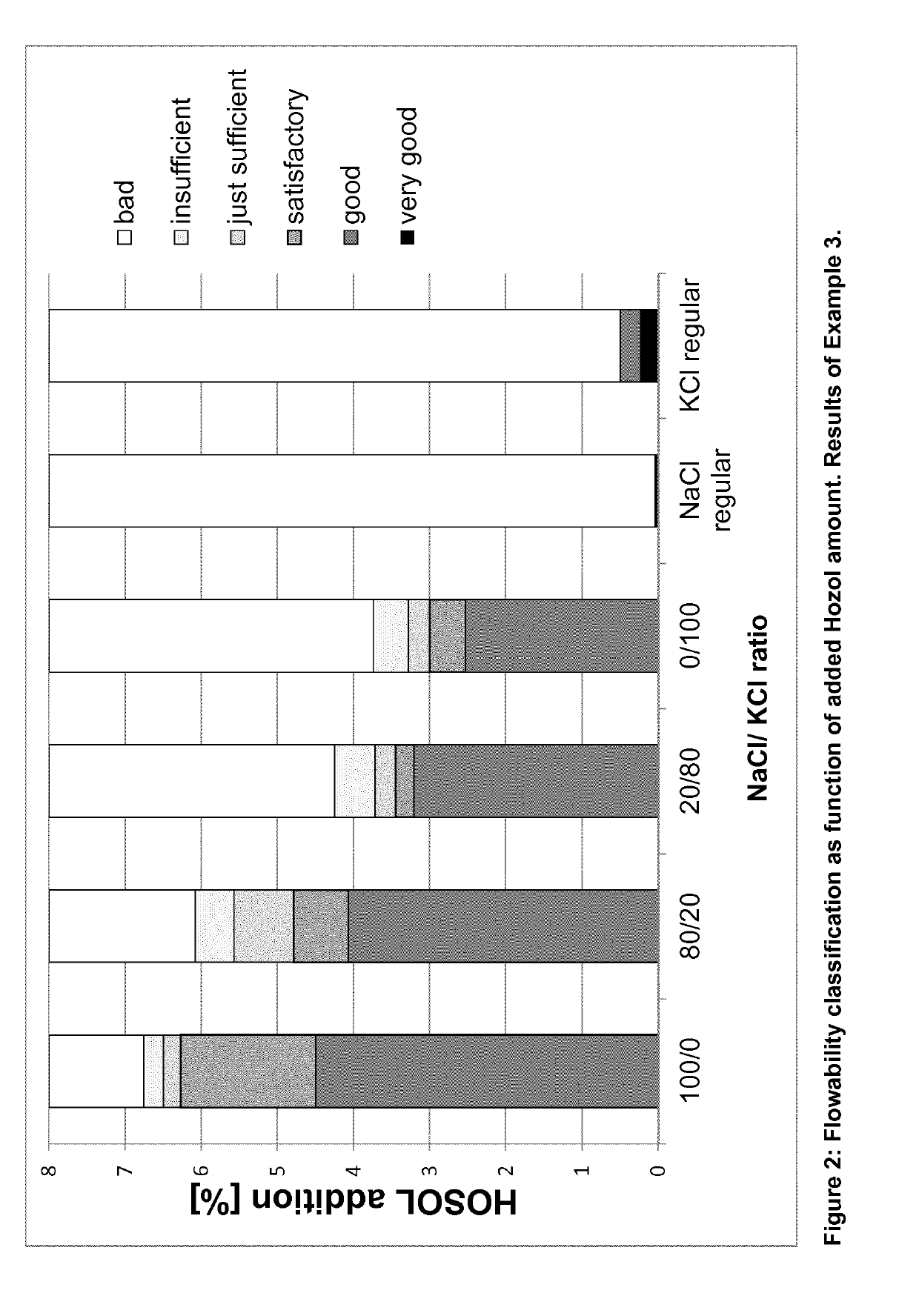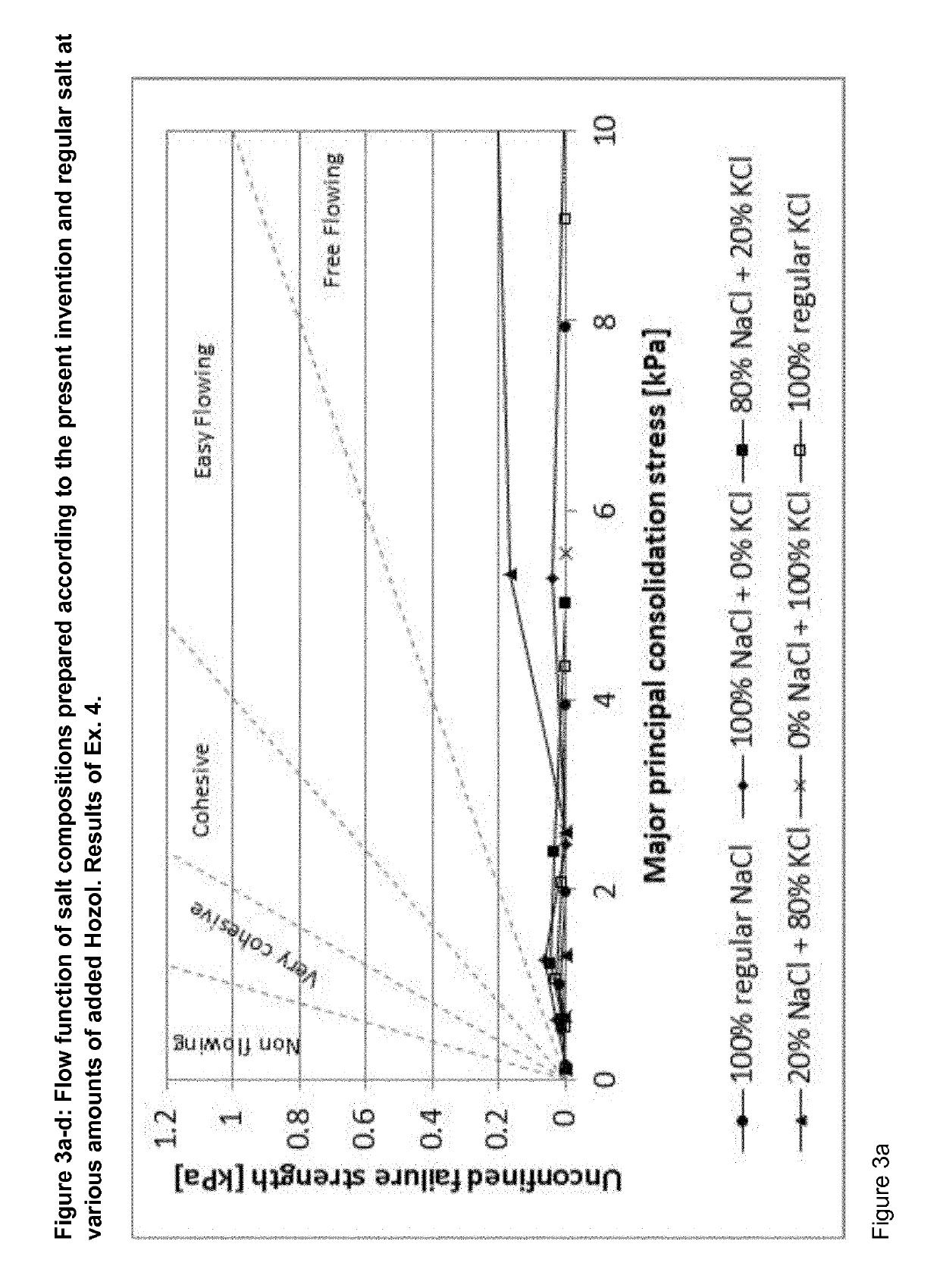Process to prepare sodium and/or potassium salt products, salt product obtainable thereby and the use thereof
- Summary
- Abstract
- Description
- Claims
- Application Information
AI Technical Summary
Benefits of technology
Problems solved by technology
Method used
Image
Examples
example 1
[0064]Another way to describe the flowability of a particulate solid than the Degussa test as mentioned above is via the Dynamic Angle of Repose. In this test a fixed amount of the particulate solid is charged into a flat disc (diameter 25.9 cm, width 3.5 cm) which is connected to a drive with variable speed. The inner circumferential wall of the disc is provided with P60 sand paper. When the disc is filled with the test sample, the drive is switched on and the disc starts rotating at the lowest speed. Subsequently, the speed is gradually increased, until the backsliding sample forms a smooth surface. The angle this smooth surface makes to the horizontal is called the dynamic angle of repose.
[0065]Commercially available NaCl (Suprasel Extra Fine, ex Akzo Nobel) and Suprasel OneGrain A30 Extra Fine, ex Akzo Nobel, were split into comparable portions of approx. 142 ml each. This is the required amount to perform the test.
[0066]The first test was done with blank Suprasel Extra Fine, no...
example 2
[0072]A good way to describe the flowability of a particulate solid is via the Degussa test, vide supra. In this test, a sample is transferred into various cups with different outlet sizes, starting with the widest one. In this example, glass funnels were used of 41.6 mm diameter and with a 90 mm height. As explained above, after deblocking the outlet, the sample should pour out spontaneously. If this is the case, the next smaller outlet is tried, until the sample does not flow out of the cup spontaneously. The number of the latest cup with spontaneous flow is recorded. The flowability is classified according the following table.
TABLE 3Flowability qualificationFlow fromOutlet diametercup no.[mm]Classification12.5Very good25Good38Satisfactory412just sufficient518Insufficientno flowBad
[0073]Four different salt compositions were tested:[0074](a) a salt composition which was prepared according to the present invention, denoted as A30 Fine (A30F),[0075](b) another salt composition which ...
example 3
[0083]The preparation of the salt compositions according to the present invention which were used in this example was done in 5 consecutive steps. In the first step the raw materials NaCl (Suprasel Fine ex Akzo Nobel) and KCl (ex K+S Kali GmbH) were milled on an Alpine 160 UPZ pin mill operated at 7125 rpm to a d50, NaCl=42.3 μm and d50, KCl=52.6 μm. From these milled raw materials, four product mixes of each 2000 g were prepared in the second step. These mixtures consisted of:[0084](a) 100% NaCl[0085](b) 80% NaCl / 20% KCl[0086](c) 20% NaCl / 80% KCl[0087](d) 100% KCl
[0088]From these mixtures tablets of each 50 g were prepared on a Herzog HTP-40 tablet press using a 1.0 t / cm2 compaction pressure. In the fourth step these tablets were first broken diametrically and then further crushed on a Frewitt GLA-ORV rubbing sieve using a 6 mm, 3.15 mm and finally a 1 mm screen. The resulting product was sieved on a 90 μm, 280 μm and a 710 μm screen.
[0089]Based on the tablet dimensions and the tru...
PUM
 Login to View More
Login to View More Abstract
Description
Claims
Application Information
 Login to View More
Login to View More - R&D
- Intellectual Property
- Life Sciences
- Materials
- Tech Scout
- Unparalleled Data Quality
- Higher Quality Content
- 60% Fewer Hallucinations
Browse by: Latest US Patents, China's latest patents, Technical Efficacy Thesaurus, Application Domain, Technology Topic, Popular Technical Reports.
© 2025 PatSnap. All rights reserved.Legal|Privacy policy|Modern Slavery Act Transparency Statement|Sitemap|About US| Contact US: help@patsnap.com



